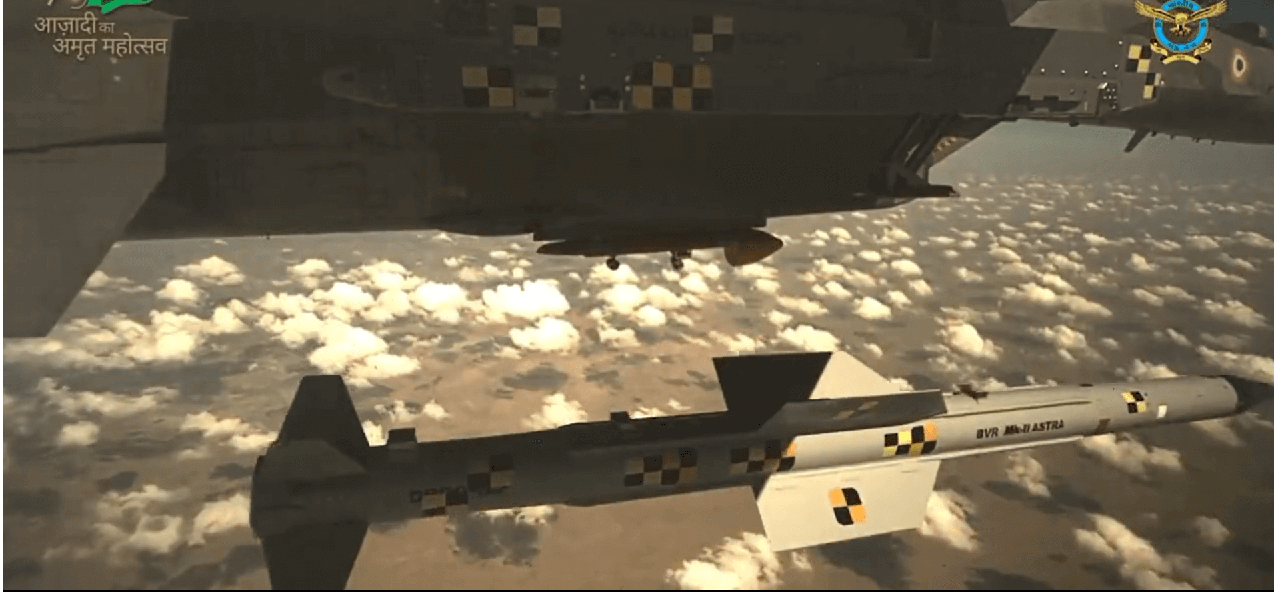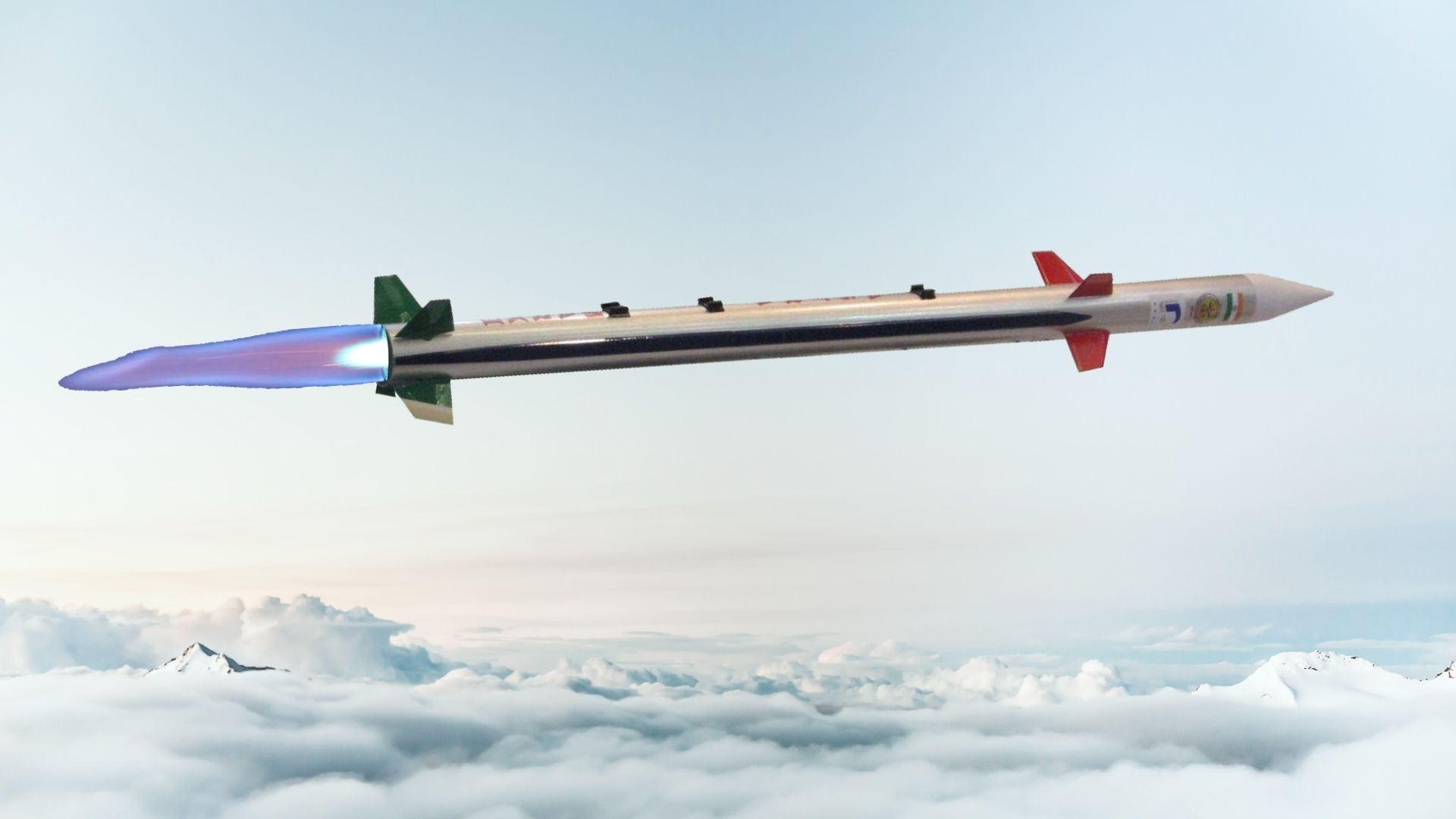The Indian Air Force has teased the public with a sneak peek of the advanced variant of the indigenous Astra missile in the run-up to the spectacular celebrations of India’s Air Force Day, which will take place on October 8, 2022.
Russia’s Poseidon ‘Nuke Drone’ Test: Is US-Led NATO Making Mushroom Clouds Out Of A Molehill?
In the promotional video released by the Indian Air Force (IAF) before the 90th Air Force Day, an Astra Mk-II beyond-visual-range air-to-air missile (BVRAAM) is launched from a Su-30 MKI fighter.
This development comes a few days after the Indian Air Force commissioned the Light Combat Helicopter’ Prachand’ as part of its Atmanirbhar Bharat (self-reliant India) campaign that aims to bolster indigenous defense manufacturing and boost self-reliance.
90 years!#AtmanirbharBharat #AzadiKaAmritMahotsav pic.twitter.com/pxe5hZW8mW
— Indian Air Force (@IAF_MCC) October 4, 2022
The IAF released the roughly nine-minute-long promotional before the Chief of Air Staff’s yearly press conference on October 4. This is the first time a video of the missile, the second in the series of Astra Beyond Visual Range Air-to-Air Missiles (BVRAAMs), has been released.
The Indian Air Force has been looking to boost its firepower in the face of a rising Chinese challenge. Instead of entirely relying on cutting-edge missiles from other countries, New Delhi remains focused on developing its own lethal air-to-air missiles.
On May 31, the India Ministry of Defense (MoD) signed a contract with Bharat Dynamics Limited (BDL) for the supply of ASTRA MK-I BVRAAM and associated equipment for the Indian Air Force & Indian Navy for Rs 2,971 crore (approximately $382.96 million) under the Buy (Indian-IDDM) category.
Until recently, there was no technology to produce these kinds of missiles domestically.
The Defense Research and Development Organisation (DRDO) has designed and built the ASTRA MK-I BVR AAM indigenously. It was developed in response to staff requirements made by the Indian Air Force for beyond visual range engagement.
Astra Mk2 is a next-generation air-to-air missile that uses a dual-pulse motor to strike at a distance of up to 160 kilometers. The video that showcased the launch for the first time to the public did not show the missile firing up its dual-pulse motor, suggesting that the video was from a dummy ejection developmental trial, according to experts.

Apart from BrahMos, for which a deal was signed earlier this year with the Philippines Navy, there are other made-in-India missiles that have found popularity outside the country and remain on the export list of the Indian government. The list includes Astra, Akash, Nag, Pinaka, and Barak 8 missiles.
The Astra Mk2 missile could be a major addition to the Indian Air Force as it would tremendously enhance the combat capability of fighter jets. The missile has often been compared to the Chinese PL-15 and the AIM-120 AMRAAM of the US Air Force.
India’s Astra MK2 Has Finally Been Launched
With exceptional maneuverability and supersonic speeds, Astra missiles are designed to engage and destroy aerial targets. The sophisticated air combat capabilities of the missile enable it to engage multiple high-performance targets.
The missile is primarily developed for the Indian Air Force and Indian Navy.
According to informed sources, the Astra Mark-II missile could have an indigenous seeker and enhanced jammer resistance. To increase the missile’s range and performance, a dual-pulse rocket motor has been installed on it. The motor improves the kinematics during the kill phase of the missile.
Large Stand-Off Ranges offered by air-to-air missiles with BVR capabilities enable fighter aircraft to eliminate enemy aircraft without being exposed to hostile air defense systems, thereby establishing and maintaining air space dominance.
In terms of technology and affordability, this missile is superior to many other similar imported missile systems.
Earlier, a special forces veteran and former Director General of Information Systems, Lt General P.C. Katoch wrote in an article that Astra Mk-2 would restore the air-to-air combat superiority of the Indian Air Force over the Pakistani Air Force.

The DRDO developed the Astra MK-I missile in collaboration with the IAF, as well as all related equipment for its launch, ground handling, and testing.
The missile, for which the IAF has previously conducted successful trials, is fully integrated on the fighter aircraft Su 30 MK-I and will be gradually merged with other fighter aircraft such as the Mirage-2000, MIG-29, and the Light Combat Aircraft (Tejas).
Additionally, India is developing the Astra Mk-III, which will have a 300+ km range. The missile will be propelled by a solid fuel-based ducted ramjet (SFDR). The DRDO has tested the SFDR technology necessary for long-range air-to-air missiles numerous times over the past few years.
India will be able to produce its own long-range air-to-air missile with the development of SFDR technology, which might match the capabilities of the best missiles in this class, such as MBDA’s Meteor, which the IAF uses on its Rafale fighter jets.
- Contact the author at sakshi.tiwari9555@gmail.com
- Follow EurAsian Times on Google News




